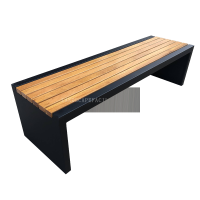Welcome to the website for landscape facilities products and knowledge.
What are the key considerations for using the Landscape Round Table in outdoor classrooms or learning spaces?
Integrating Landscape Round Tables into outdoor educational spaces requires thoughtful planning across multiple dimensions. The primary consideration involves durability and weather resistance, as outdoor furniture must withstand constant exposure to elements while maintaining structural integrity and safety. Material selection becomes crucial - whether choosing sustainably sourced wood, recycled plastics, or powder-coated metals that resist corrosion and require minimal maintenance.
Pedagogical alignment represents another vital aspect. Educators must evaluate how the circular design facilitates different teaching methodologies, from Socratic discussions to collaborative group work. The table's dimensions should accommodate varying group sizes while allowing instructors to maintain visual contact with all participants. Consider how the design encourages inclusive participation and whether it supports multiple learning styles through its configuration.
Accessibility and universal design principles cannot be overlooked. The installation must accommodate learners of all abilities, with appropriate clearance for wheelchair users and consideration of table height variations. The surrounding terrain requires evaluation for smooth transitions and stable footing, ensuring all students can comfortably engage with the learning experience.
Environmental integration plays a significant role in successful implementation. Assess how the table placement interacts with natural elements - considering sun exposure throughout the day, wind patterns, and proximity to natural features that might enhance or distract from the learning experience. The design should complement rather than compete with the natural surroundings.
Practical considerations include storage solutions for periods of non-use, maintenance requirements specific to the local climate, and budget allocation for long-term upkeep. Additionally, evaluate how the table facilitates technology integration when needed, while primarily encouraging unplugged, nature-immersive learning experiences that develop students' environmental awareness and appreciation.
Finally, consider the community aspect - how the table serves as a gathering point that fosters social development and collaborative skills. The circular format naturally promotes eye contact and equal participation, creating an ideal environment for developing communication skills and building classroom community in an outdoor setting.
Related search:

Recommendation
Modern Stainless Steel Begonia Wood Park Chair Outdoor Courtyard Leisure Sun Protection Bench Long Seat